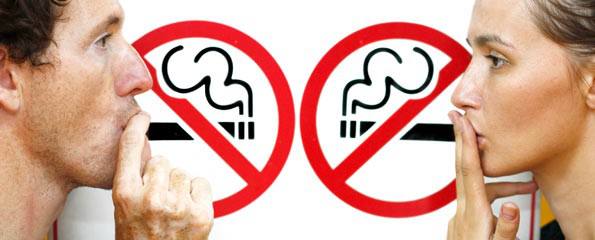How to quit smoking
- Introduction to quitting smoking
- Quit statistics
- Types of quitting
- Psychological smoking interventions
- Pharmacotherapy for quitting
- Combination therapies
- Other aids used for quitting
- Support network
- Make a change
Introduction to quitting smoking
Most Australians who take up smoking regret it and make at least one attempt to quit in their lifetime. Quitting smoking has a very high relapse rate and therefore while many people are able to quit, it’s maintaining a smoke-free lifestyle which is the ultimate challenge.
It is normal to make many quit attempts before you succeed in quitting permanently, so do not be discouraged if you are not able to quit the first time around. Statistics have shown that smokers who make attempts to quit without success are more likely to try again, especially if their first attempt lasted a long time.
Quit statistics
 In the past two decades, the number of Australians who have successfully quit smoking has substantially increased. A 2007 Australian survey found that there are more ex-smokers in Australia than smokers aged 14 years or older (4.3 million and 3.1 million respectively).
In the past two decades, the number of Australians who have successfully quit smoking has substantially increased. A 2007 Australian survey found that there are more ex-smokers in Australia than smokers aged 14 years or older (4.3 million and 3.1 million respectively).
Studies indicate that the later in life the habit of smoking is developed, the easier it is to quit. That said, it is more common for younger people to make quit attempts.
Surveys among smokers have indicated that the greatest impact on their initial decision to quit smoking comes from anti-smoking television commercials (46%), followed by nicotine replacement therapy (21%) and advice from healthcare professionals (21%).
People who quit without any form of assistance have a 3–5% rate of success, compared to 15–20% success in those who seek support. This is an important point to note for those who have tried quitting without any aids. When making a second attempt to quit, seek a quit strategy that combines some support; your doctor is a good first port of call.
Only 8% of smokers in 2001 admitted to having no intention of ever quitting. That means that 92% of smokers intend to quit.
Types of quitting
Cold turkey
Quitting smoking cold turkey refers to abruptly stopping smoking, as opposed to gradually reducing cigarette intake. Quitting cold turkey is commonly adopted by smokers attempting to quit, and tends to be more effective in the long-term than cutting down.
Cutting down
Cutting down refers to gradually reducing the amount of cigarettes that are inhaled per day until they are eventually stopped altogether.
Psychological smoking interventions
 Psychological smoking interventions refer to help with the emotional, behavioural and mental aspects of quitting. For every smoker, there are many psychological barriers that need to be overcome in order to successfully quit smoking. These will be different for different people, and may include:
Psychological smoking interventions refer to help with the emotional, behavioural and mental aspects of quitting. For every smoker, there are many psychological barriers that need to be overcome in order to successfully quit smoking. These will be different for different people, and may include:
- Stress and anxiety: Cigarettes are often used as a distraction or as a way to ‘manage stress levels’. However, it is uncertain whether the stress relief that smokers feel when they have a cigarette is a genuine effect on mood, or whether it is only a relief from nicotine withdrawal. Smokers tend to report higher levels of stress than non-smokers, suggesting that instead of providing stress relief, cigarettes actually make you more stressed.
- Depression: People who are depressed will find it harder to quit due to the mood changes associated with nicotine withdrawal.
- Psychiatric illness: People with psychiatric disorders will find it more difficult to quit smoking.
- Fear of weight gain: For many smokers, the fear of weight gain provides cause to avoid quitting smoking. The majority of smokers who quit will tend to put on weight, especially in the first year after quitting. This is due to an increased food intake and a decrease in metabolic rate. That said, smokers on average tend to be 4 kg lighter than non-smokers to start with.
- Self-exempting beliefs: A large majority of smokers have the belief that ‘it will never happen to me’. For example, someone who runs every day and does not drink alcohol may think that they have less chance of developing lung cancer than the next smoker because their lifestyle ‘balances out’ the cigarettes. This is not true. Every smoker has the same risk of negative health outcomes associated with smoking as the next smoker.
- Perceived disadvantages associated with quitting: By thinking that you are not going to enjoy life without cigarettes, you are providing yourself with a reason not to quit smoking. Do not focus on the negatives associated with quitting, but on the positives.
- Lifestyle: There may be circumstances in your life which you give priority to quitting, for example having ‘bigger’ family problems, poverty, or giving in to social norms. This is understandable, but keep in mind that you may be more financially, physically and psychologically able to cope with difficult life circumstances if you are a non-smoker.
For all these reasons, psychological interventions are an important aspect of quitting and have a large impact on success. Studies have indicated that longer and more frequent contact time with a healthcare professional has a significant positive impact on cessation rates. Extended counselling and educational one-to-one sessions are the most successful psychological smoking interventions.
Quitline
 Quitline is an inexpensive telephone counselling, information and support service available to smokers in Australia.
Quitline is an inexpensive telephone counselling, information and support service available to smokers in Australia.
Quitline counsellors have tertiary qualifications in psychology and/or counselling, and will provide you with confidential advice, self-help activities and over-the-phone counselling. Quitline also offers a call-back service whereby they can call you at predetermined times to check up on your progress.
Quitline was phoned by 117,174 smokers in 2007. The majority of people who make an initial call to Quitline make an attempt to quit.
Education
The motivation to quit for many smokers is based on their knowledge that smoking is harmful. Therefore it is important that you are well-educated on the negative effects of smoking. Your doctor will be able to provide you with further information.
Studies have shown that although many smokers know the potential risks, they are still under the illusion that ‘it will never happen to me’ and other similar self-exempting beliefs. These smokers are less likely to quit than those who accept that the risks apply to them.
Cognitive dissonance is a psychological phenomenon that can help to explain the thinking patterns associated with tobacco addiction. Dissonance occurs when a person holds two inconsistent beliefs. In order to reduce the dissonance, the person may unconsciously ‘forget’ the attitude that is contrary to their beliefs. For example, people know that tobacco is bad for them, yet act contrary to their knowledge by continuing to smoke. In order to reduce the mental discomfort of having opposing actions and thoughts, the person may develop reasons to justify their behaviour. For example, a smoker watching an anti-smoking TV commercial may develop a belief that the research is untrue or exaggerated. This makes it very difficult to convince a smoker to quit. Health professionals may try to change these thinking patterns through education.
 | For more information, see Health Benefits of Quitting Smoking. |
Cognitive behavioural therapy (CBT)
 Cognitive behavioural therapy (CBT) is a relatively short-term form of psychotherapy (a type of counselling) that can be used to help people change their lifestyles.
Cognitive behavioural therapy (CBT) is a relatively short-term form of psychotherapy (a type of counselling) that can be used to help people change their lifestyles.
CBT for quitting underlies many interventions for smoking cessation. Techniques of CBT that relate to smoking intervention include:
- Individualised problem-solving strategies used to help cope with difficult environments and situations. This may involve developing behaviours to avoid smoking when you are in environments where you are used to smoking, such as on coffee breaks;
- Changing thinking patterns: A healthcare professional will help you to cope better emotionally with the mood changes associated with nicotine withdrawal by working on the way you think about certain situations. For example, when you are stressed, the first thought that comes to your mind might be ‘I need a cigarette’. If you can change this to ‘I need some fresh air’ or ‘I need to slow my breathing’, you will be better able to handle the stress without a cigarette.
- Education about the quit process: The more you know and understand about nicotine dependence, quit strategies and withdrawal symptoms, the better equipped you will be to face the challenge of quitting.
- Identifying social or environmental cues that trigger the urge for a cigarette. By determining which situations make you most vulnerable to feeling the need for nicotine, you can try to avoid them. For example, if having a beer is a strong cue for lighting a cigarette, then perhaps drinking a cider instead may be a better option. In order to identify these cues, your doctor may ask you to keep a diary and record each time you feel like a cigarette, what you were doing and how you were feeling at the time. They will then review the diary and try to determine which situations make you feel most vulnerable to taking up a cigarette.
Group courses, internet intervention and one-on-one sessions
One-on-one counselling sessions with your doctor, nurse, psychologist or counsellor are the most successful psychological intervention. Combining one-on-one sessions with freely available aids on the internet, reading material and Quitline will provide you with solid psychological support whenever you need it.
Pharmacotherapy for quitting
 For some smokers, the physical withdrawal from nicotine is more challenging than the psychological withdrawal. If you find the withdrawal from nicotine extremely challenging, then pharmacotherapy may be the best option. However, remember that taking medications will not do the quitting for you. You still need the motivation and desire to quit.
For some smokers, the physical withdrawal from nicotine is more challenging than the psychological withdrawal. If you find the withdrawal from nicotine extremely challenging, then pharmacotherapy may be the best option. However, remember that taking medications will not do the quitting for you. You still need the motivation and desire to quit.
Pharmacotherapy can increase the success of quit attempts. In some cases, it has even been reported to double quit rates. The current first-line smoking cessation medications include nicotine replacement therapy (e.g. Nicorette, Nicabate), sustained-release bupropion (e.g. Bupropion SR, Zyban) and varenicline (Champix). Studies have shown that all three medicines significantly increase maintenance of smoking cessation when compared to not using the medications. Smoking cessation agents are usually safe and well-tolerated, with very few cases of serious side effects.
A study found that half of relapsed smokers, after one quit attempt with a pharmacological aid, will opt to use the medication again for subsequent quit attempts. Furthermore, those who do not succeed in quitting with a pharmacological agent are likely to quickly engage in another quit attempt.
 | For more information, see Nicotine Replacement Therapy (NRT). |
Combination therapies
Research shows that the best quit rates appear to be from quit regimes that combine pharmacotherapy with some form of psychological intervention. The more you use the quit aids that are available, the more likely you will be able to quit and maintain smoking cessation.
Other aids used for quitting
There are a number of other methods that are commonly used as interventions for smokers who want to make a solid quit attempt; however, there is no substantial evidence to support their success. It would be wise to see your doctor and receive information about all the quit options available to you before you try the following:
- Hypnotherapy: The hypnotherapist who performs the hypnotherapy will either focus on weakening the desire to smoke or strengthening the will needed to stop smoking;
- Acupuncture: Acupuncture therapy works by reducing withdrawal symptoms;
- Exercise therapy: Exercise can reduce withdrawal symptoms and reduce the desire to smoke; and
- Counter-conditioning/aversion methods: Counter-conditioning is a psychological therapy that matches smoking with a negative thought, taste, or sensation (such as a small electric shock) to give smoking a negative connotation.
Support network
 People who receive help and support from family and friends who do not smoke are the most likely to be successful at quitting. If you are the friend or family of a smoker who is trying to quit smoking, your support is extremely important through the quitting process.
People who receive help and support from family and friends who do not smoke are the most likely to be successful at quitting. If you are the friend or family of a smoker who is trying to quit smoking, your support is extremely important through the quitting process.
Make a change
In order for you to become a permanent non-smoker you must visualise yourself as a non-smoker. You need to make a quit attempt. Even if you are not successful, it will help you to recognise your individual barriers to smoking cessation. You and your doctor can then use your experience to identify the best quit strategy for you.
Once you have quit, you will recognise the benefits of living a smoke-free lifestyle and you can learn to enjoy and value life without this deadly habit.
More information
 | For more information on smoking and its health effects, and some useful tools, videos and animations, see Smoking. |
References
- Ellerman A, Ford C, Stillman S. Smoking cessation: 7.0: Introduction. In: Scollo M, Winstanley M (eds). Tobacco in Australia: Facts and Issues (3rd edition) [online]. Carlton, VIC: Cancer Council Victoria; 2008 [cited 15 June 2010]. Available from: URL link
- Ellerman A, Ford C, Stillman S. Smoking cessation: 7.1: Quitting activity. In: Scollo M, Winstanley M (eds). Tobacco in Australia: Facts and Issues (3rd edition) [online]. Carlton, VIC: Cancer Council Victoria; 2008 [cited 15 June 2010]. Available from: URL link
- Ellerman A, Ford C, Stillman S. Smoking cessation: 7.7: Personal factors associated with quitting. In: Scollo M, Winstanley M (eds). Tobacco in Australia: Facts and Issues (3rd edition) [online]. Carlton, VIC: Cancer Council Victoria; 2008 [cited 15 June 2010]. Available from: URL link
- Ellerman A, Ford C, Stillman S. Smoking cessation: 7.4: Assistance with quitting. In: Scollo M, Winstanley M (eds). Tobacco in Australia: Facts and Issues (3rd edition) [online]. Carlton, VIC: Cancer Council Victoria; 2008 [cited 15 June 2010]. Available from: URL link
- Ellerman A, Ford C, Stillman S. Smoking cessation: 7.17: Combined interventions. In: Scollo M, Winstanley M (eds). Tobacco in Australia: Facts and Issues (3rd edition) [online]. Carlton, VIC: Cancer Council Victoria; 2008 [cited 15 June 2010]. Available from: URL link
- Corvette BAB. Conflict management: A practical guide to developing negotiation strategies. New Jersey: Pearson Prentice Hall; 2007: 168-70. [Book]
- Zwar N, Richmond R, Borland R, et al (eds). Smoking cessation guidelines for Australian general practice [online]. Fairbairn, ACT: quitnow, Australian Government Department of Health and Ageing; 2004 [cited August 2010]. Available from: URL link
- Ellerman A, Ford C, Stillman S. Smoking cessation: 7.11: Methods, services and products for quitting – Methods. In: Scollo M, Winstanley M (eds). Tobacco in Australia: Facts and Issues (3rd edition) [online]. Carlton, VIC: Cancer Council Victoria; 2008 [cited 15 June 2010]. Available from: URL link
- Ellerman A, Ford C, Stillman S. Smoking cessation: 7.5: Intensity of intervention. In: Scollo M, Winstanley M (eds). Tobacco in Australia: Facts and Issues (3rd edition) [online]. Carlton, VIC: Cancer Council Victoria; 2008 [cited 15 June 2010]. Available from: URL link
- Ellerman A, Ford C, Stillman S. Smoking cessation: 7.14: Methods, services and products for quitting – Telephone advice and assistance. In: Scollo M, Winstanley M (eds). Tobacco in Australia: Facts and Issues (3rd edition) [online]. Carlton, VIC: Cancer Council Victoria; 2008 [cited 15 June 2010]. Available from: URL link
- Ellerman A, Ford C, Stillman S. Smoking cessation: 7.13: Methods, services and products for quitting – Cognitive behavioural therapy (CBT). In: Scollo M, Winstanley M (eds). Tobacco in Australia: Facts and Issues (3rd edition) [online]. Carlton, VIC: Cancer Council Victoria; 2008 [cited 15 June 2010]. Available from: URL link
- Ellerman A, Ford C, Stillman S. Smoking cessation: 7.15: Methods, services and products for quitting – More intensive support. In: Scollo M, Winstanley M (eds). Tobacco in Australia: Facts and Issues (3rd edition) [online]. Carlton, VIC: Cancer Council Victoria; 2008 [cited 15 June 2010]. Available from: URL link
- Ellerman A, Ford C, Stillman S. Smoking cessation: 7.16: Pharmacotherapy. In: Scollo M, Winstanley M (eds). Tobacco in Australia: Facts and Issues (3rd edition) [online]. Carlton, VIC: Cancer Council Victoria; 2008 [cited 15 June 2010]. Available from: URL link
- Ellerman A, Ford C, Stillman S. Smoking cessation: 7.18: Unproven methods. In: Scollo M, Winstanley M (eds). Tobacco in Australia: Facts and Issues (3rd edition) [online]. Carlton, VIC: Cancer Council Victoria; 2008 [cited 15 June 2010]. Available from: URL link
- Piper ME, Smith SS, Schlam TR, et al. A randomized placebo-controlled clinical trial of 5 smoking cessation pharmacotherapies. Arch Gen Psychiatry. 2009;66(11):1253-62. [Abstract]
- Cupertino AP, Wick JA, Richter KP, et al. The impact of repeated cycles of pharmacotherapy on smoking cessation: A longitudinal cohort study. Arch Intern Med. 2009;169(20):1928-30. [Abstract]
- Raw M, Regan S, Rigotti NA, McNeill A. A survey of tobacco dependence treatment guidelines in 31 countries. Addiction. 2009;104(7):1243-50. [Abstract | Full text]
Dates
Tags
Created by:

 Login
Login














